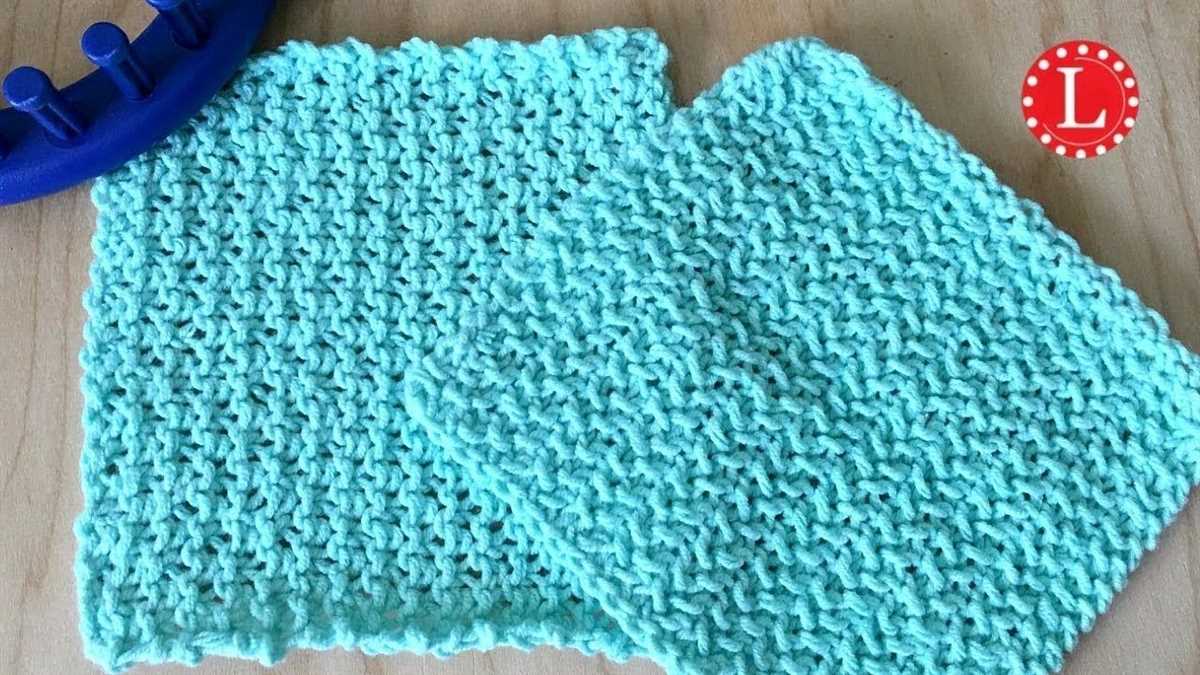
Knitting dishcloths is a popular pastime for many crafters. They are quick projects that allow you to practice new stitch patterns and experiment with different yarns and colors. One type of dishcloth pattern that is particularly popular is the round dishcloth. Round dishcloths not only add a decorative touch to your kitchen, but they also offer practicality since their shape allows for easy cleaning of dishes and other surfaces.
If you are new to knitting or looking for a simple project to try, round dishcloths are a great option. There are many easy patterns available that use basic knitting techniques such as knitting in the round and simple stitch patterns. These patterns often include step-by-step instructions and helpful tips, making them suitable for beginners.
One advantage of knitted round dishcloths is that they can be made with a variety of different materials. Cotton yarn is a common choice for dishcloths as it is absorbent and durable. However, you can also experiment with other fibers such as bamboo or linen for a different texture and feel. Additionally, round dishcloths can be knit in different sizes, allowing you to customize them to fit your needs.
If you are looking for easy knitted round dishcloth patterns, you have come to the right place. In this article, we will explore a variety of simple patterns that are perfect for beginners and experienced knitters alike. From basic garter stitch designs to more intricate lace patterns, there is sure to be a round dishcloth pattern that catches your eye.
Benefits of Using Knitted Dishcloths
Knitted dishcloths offer several benefits that make them a popular choice among those who enjoy knitting and want to add a personal touch to their kitchen. Here are some key benefits of using knitted dishcloths:
-
Durable and long-lasting: Unlike disposable dishcloths, knitted dishcloths are made from sturdy materials such as cotton or linen, which means they can withstand regular use and washing without falling apart. This durability ensures that your dishcloths will last for a long time, saving you money in the long run.
-
Effective cleaning: Knitted dishcloths have a textured surface that helps to scrub away stubborn stains and food debris. The texture also helps to absorb liquids, making them an effective tool for wiping down countertops and dishes. By using knitted dishcloths, you can ensure that your kitchen surfaces and dishes are clean and hygienic.
-
Eco-friendly alternative: Disposable paper towels and dishcloths contribute to waste and harm the environment. Knitted dishcloths, on the other hand, are reusable and can be washed and used again and again. By using knitted dishcloths, you can reduce your environmental footprint and contribute to a more sustainable lifestyle.
-
Customizable and stylish: Knitting allows for endless possibilities when it comes to design and color. You can create dishcloths in a variety of patterns, colors, and sizes to match your kitchen decor or personal preferences. Knitted dishcloths can also make great gifts for friends and family, showcasing your creativity and thoughtfulness.
-
Easy to care for: Knitted dishcloths are machine washable, making them easy to clean and maintain. Simply toss them in the washing machine with your regular laundry and they will come out fresh and ready to use again. This convenience makes knitted dishcloths a practical choice for any kitchen.
In conclusion, using knitted dishcloths offers a range of benefits, including durability, effective cleaning, eco-friendly alternatives, customization options, and ease of care. Whether you are an avid knitter or simply looking for a practical and stylish addition to your kitchen, knitted dishcloths are a great choice.
How to Choose the Right Yarn for Knitted Dishcloths
When it comes to knitting dishcloths, choosing the right yarn is essential. The right yarn can make a big difference in the durability and usefulness of the finished dishcloth. Here are some tips to help you choose the right yarn for your knitted dishcloth projects.
Consider the Material
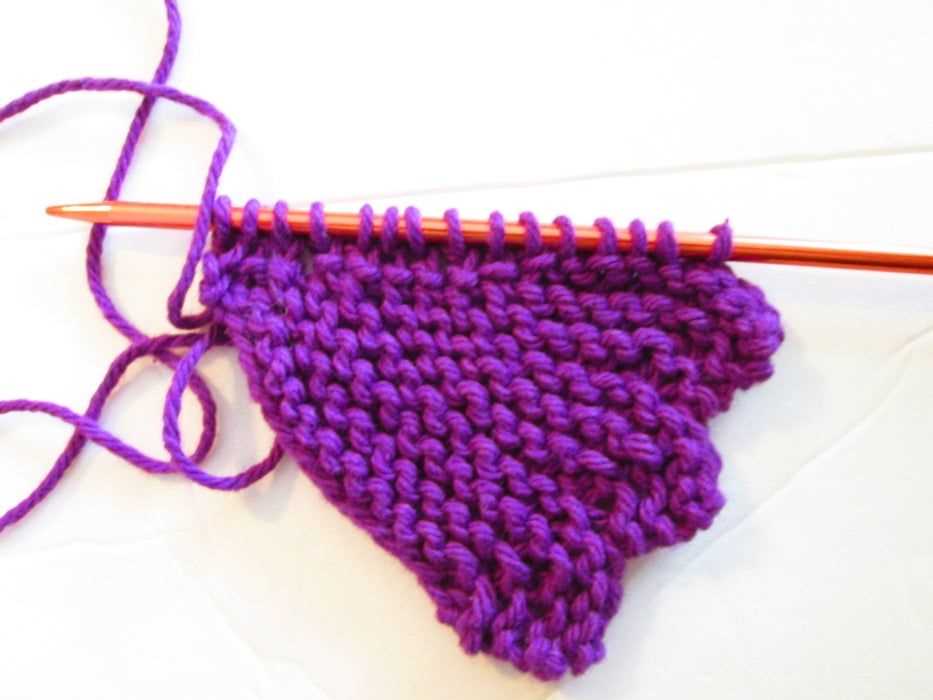
One of the first factors to consider when choosing yarn for knitted dishcloths is the material. Cotton is a popular choice for dishcloths due to its absorbency and durability. It is also easy to clean and dries quickly. Look for cotton yarns that are labeled as “dishcloth cotton” or “kitchen cotton” as they are specifically designed for this purpose.
Another option to consider is linen yarn. Linen is known for its strength and ability to withstand frequent washing, making it a great choice for dishcloths. It can be a bit stiff to work with initially, but it softens with use and becomes more absorbent over time. Linen yarns often have a beautiful drape and are available in a variety of colors.
Choose the Right Weight
The weight of the yarn also plays a role in determining the finished texture and thickness of the dishcloth. For a lighter and more delicate dishcloth, choose a fingering or sport weight yarn. These yarns create a finer fabric that is perfect for gentle scrubbing. If you prefer a heavier and more durable dishcloth, opt for a worsted or bulky weight yarn. These thicker yarns create a sturdier fabric that can withstand more vigorous cleaning.
Consider the Care Instructions
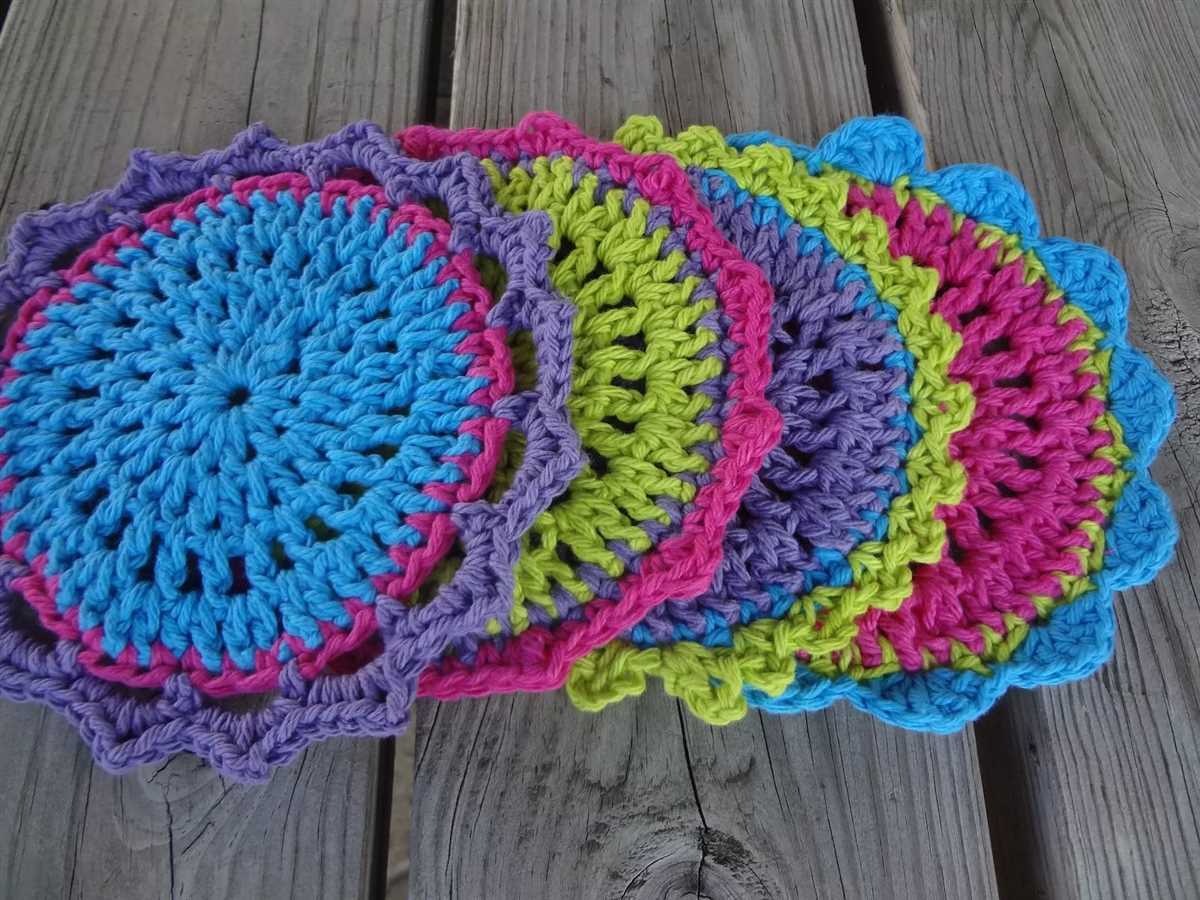
Before purchasing yarn for dishcloths, be sure to check the care instructions. Since dishcloths are likely to be exposed to water, soap, and other cleaning products, it’s important to choose yarn that can be easily cared for. Look for yarns that can be machine washed and dried to ensure hassle-free cleaning. Some yarns may require hand washing or special care, so be sure to choose a yarn that fits your desired level of maintenance.
By considering the material, weight, and care instructions, you can choose the right yarn for your knitted dishcloth projects. The right yarn will not only contribute to the functionality of the dishcloth but also enhance its appearance and durability. So, take your time to explore different options and choose the yarn that best suits your needs and preferences.
Basic Knitting Stitches for Dishcloths
Knitting dishcloths is not only a practical way to keep your kitchen clean, but it’s also a great way to practice and improve your knitting skills. Whether you’re a beginner or an experienced knitter, mastering the basic stitches is essential for creating beautiful and functional dishcloths. Here are some of the most common stitches used in easy knitted round dishcloth patterns:
1. Knit Stitch
The knit stitch is the foundation of knitting and is used in almost every project. To knit a stitch, insert the right needle into the front of the first stitch on the left needle, from left to right. Wrap the yarn around the right needle counterclockwise and pull it through the stitch, letting the old stitch slip off the left needle. Repeat this process until you have knit all the stitches on the left needle.
2. Purl Stitch
The purl stitch is the reverse of the knit stitch and creates a bumpy texture. To purl a stitch, insert the right needle into the front of the first stitch on the left needle, from right to left. Wrap the yarn around the right needle clockwise and pull it through the stitch, letting the old stitch slip off the left needle. Repeat this process until you have purled all the stitches on the left needle.
3. Seed Stitch
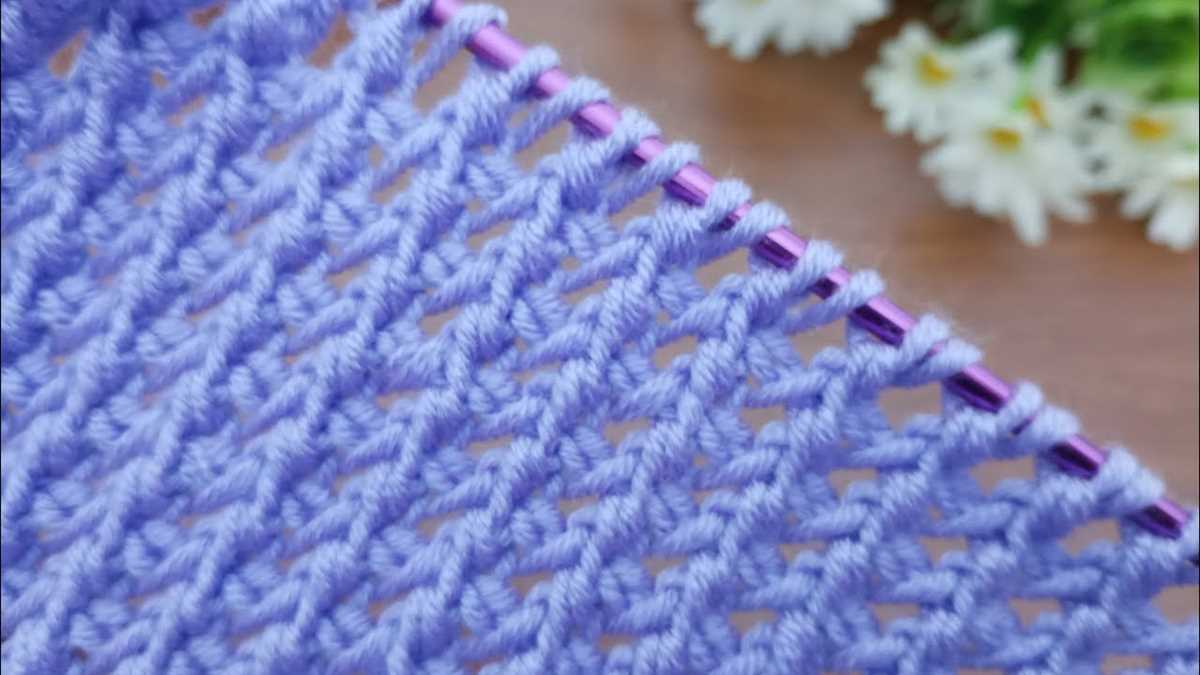
The seed stitch pattern alternates between knit and purl stitches to create a textured fabric. To create a seed stitch, alternate between knitting and purling stitches in each row. For example, knit the first stitch, purl the second stitch, knit the third stitch, and so on. In the next row, purl the knit stitches and knit the purl stitches.
4. Garter Stitch
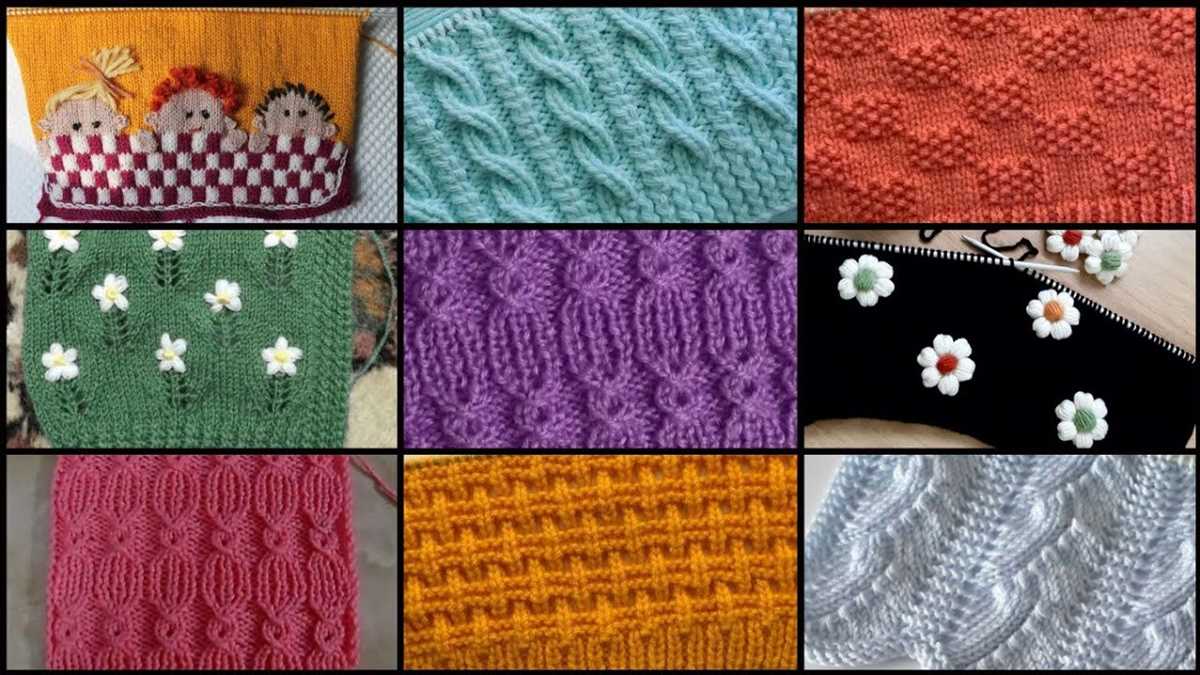
The garter stitch is another simple stitch pattern that is created by knitting every row. This stitch pattern creates a fabric with a ridged texture and is reversible, making it perfect for dishcloths. To knit the garter stitch, simply knit every stitch in every row.
5. Rib Stitch
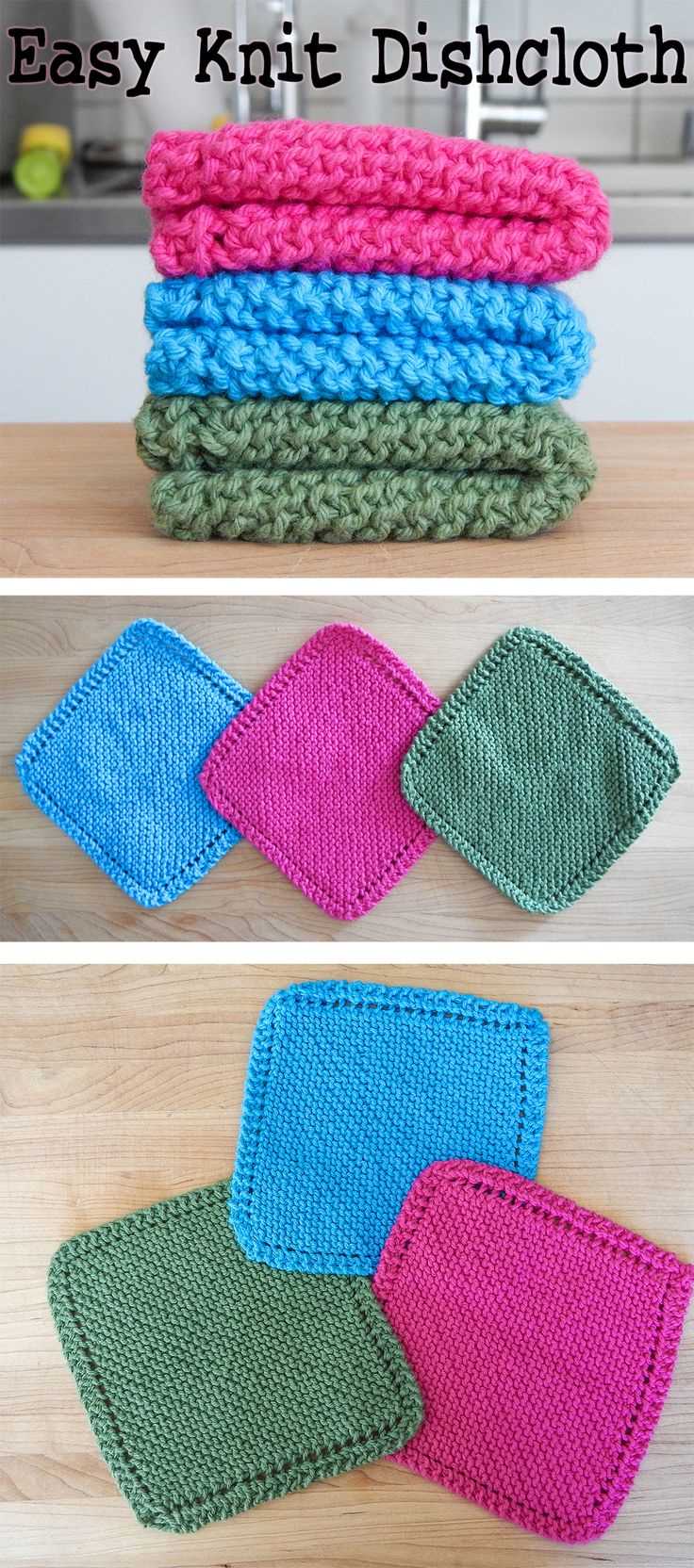
The rib stitch is a versatile stitch pattern that is commonly used for cuffs, collars, and borders. It creates vertical columns of knit and purl stitches. To create a rib stitch, alternate between knitting and purling stitches in each row, but make sure to start each row with the same stitch as the previous row. For example, if the first stitch in the previous row was a knit stitch, start the next row with a knit stitch as well.
These basic knitting stitches are the building blocks of many dishcloth patterns and can be easily customized to create unique designs. By mastering these stitches, you’ll be able to create beautiful and functional dishcloths that will add a touch of handmade charm to your kitchen.
Knitting Tools and Supplies for Dishcloth Making
If you are interested in making your own dishcloths, there are a few essential knitting tools and supplies that you will need. These items will help you create beautiful and functional dishcloths that you can use in your kitchen.
Knitting Needles: The first thing you will need is a pair of knitting needles. For dishcloth making, it is best to use medium-sized needles. You can choose between straight or circular needles, depending on your personal preference. If you are a beginner, straight needles may be easier to work with.
Cotton Yarn: To create durable and absorbent dishcloths, it is recommended to use cotton yarn. Cotton is a natural fiber that is soft, strong, and easy to care for. It absorbs moisture well and is resistant to mold and mildew. You can choose from a variety of colors to create dishcloths that match your kitchen decor.
Tapestry Needle: A tapestry needle is a must-have tool for finishing your dishcloth projects. It is used to weave in loose ends and sew seams. Choose a needle with a large eye that can accommodate the thickness of the yarn you are using.
Scissors: A pair of sharp scissors is essential for cutting yarn and trimming any loose ends. Make sure to use scissors specifically designed for cutting yarn to prevent fraying.
Stitch Markers: Stitch markers can be helpful when working on more complex dishcloth patterns. They can be used to mark specific stitches or sections of your work, making it easier to keep track of your progress and ensure accuracy.
Measuring Tape: Having a measuring tape handy is useful for checking the size of your dishcloths as you work. It can also be helpful for measuring gauge and ensuring that your stitches are the correct size.
By having these knitting tools and supplies on hand, you will be well-equipped to embark on your dishcloth-making journey. With a bit of practice and creativity, you will soon be able to create beautiful and functional dishcloths that you can be proud of.
Simple Round Dishcloth Pattern for Beginners
If you are a beginner knitter looking for a simple and easy project, a round dishcloth is a perfect choice. Not only is it a practical item for your kitchen, but it also allows you to practice basic knitting stitches and techniques.
Materials:
- Worsted weight cotton yarn
- Size 8 (5mm) knitting needles
- Scissors
- Tapestry needle
Instructions:
- Cast on 4 stitches.
- Knit into the front and back of each stitch in the first round, doubling the stitch count to 8 stitches.
- Continue knitting every stitch in each round until the dishcloth reaches your desired size. You can make it as small or as large as you like.
- Bind off all stitches.
- Weave in any loose yarn ends using a tapestry needle.
Tips:
- Make sure to use cotton yarn for your dishcloth, as it is absorbent and durable.
- If you want to add some decoration to your dishcloth, you can incorporate different stitch patterns or color changes.
- Experiment with different needle sizes to achieve different textures and densities in your dishcloth.
- Once your dishcloth is complete, you can personalize it by adding a crocheted border or attaching a loop for hanging.
With this simple round dishcloth pattern, even a beginner knitter can create a useful and beautiful item for their kitchen. Happy knitting!
How to Customize Your Dishcloth Size and Shape
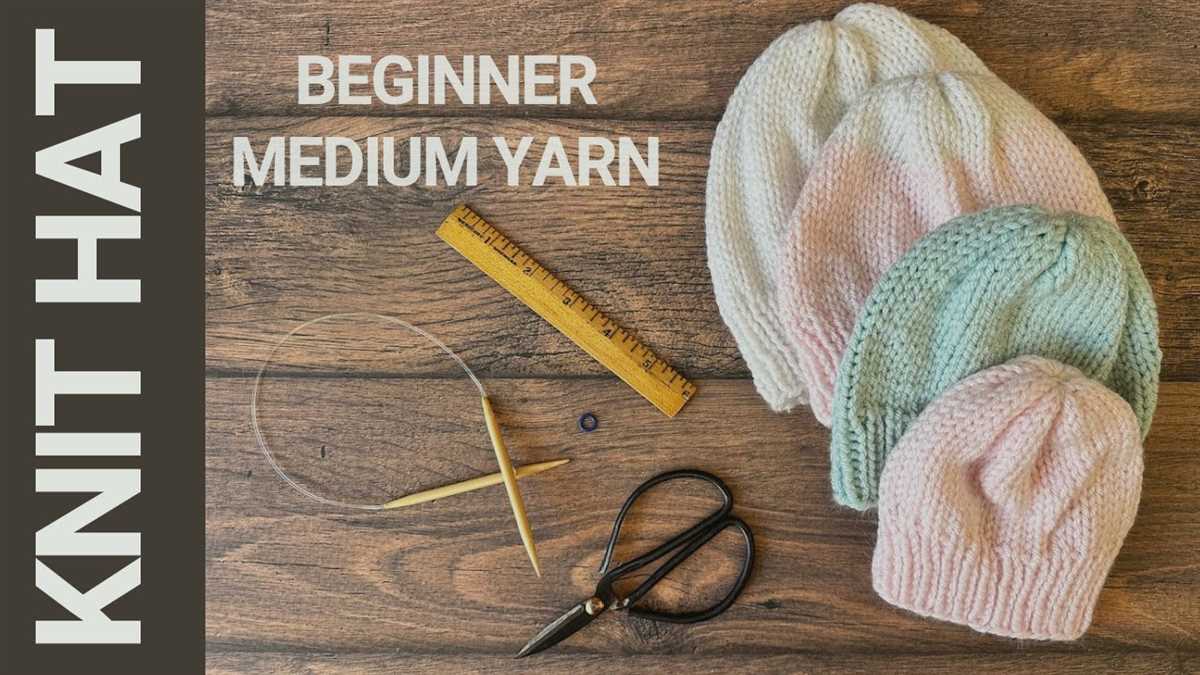
If you are a knitter looking to make your own dishcloths, you might be interested in customizing the size and shape of your creations. While there are many patterns available for round dishcloths, you can easily adapt them to create dishcloths of different sizes and shapes to suit your needs.
1. Adjusting the Size: To make a larger or smaller dishcloth, you can simply adjust the number of stitches you cast on and the number of rows you knit. For example, if you want a larger dishcloth, you can cast on more stitches and knit more rows. Conversely, if you want a smaller dishcloth, cast on fewer stitches and knit fewer rows. Keep in mind that the fabric may become denser or looser depending on the changes you make, so you may need to experiment to find the perfect size and stitch count for your desired outcome.
2. Changing the Shape: If you prefer a different shape, such as a rectangle or square, you can modify the pattern accordingly. For a rectangular dishcloth, you can cast on a larger number of stitches and knit until you reach the desired length. To make a square dishcloth, cast on the same number of stitches as there are rows in the pattern, and knit until the piece is square. You can also experiment with different stitch patterns to create unique textures or patterns for your dishcloth.
3. Adding Embellishments: Once you have customized the size and shape of your dishcloth, you can further personalize it by adding embellishments. This could include adding a border, such as a garter stitch or seed stitch edge, or incorporating different colors or patterns into the design. You can also experiment with different types of yarn or yarn weights to create different textures or effects.
In conclusion, customizing the size and shape of your dishcloth allows you to create unique and personalized creations that suit your preferences and needs. Whether you want a larger or smaller dishcloth, or prefer a different shape altogether, the possibilities are endless. Don’t be afraid to experiment and let your creativity shine through in your knitting projects!
##
Adding Texture to Your Knitted Dishcloths
If you’re looking to spice up your collection of knitted dishcloths, adding texture can be a great way to do so. While a basic stockinette stitch is simple and quick to knit, incorporating different stitches and patterns can create a more interesting and visually appealing dishcloth.
Cable Stitch: One way to add texture to your knitted dishcloths is by incorporating cable stitches. Cable stitches are created by crossing stitches over each other, resulting in a twisted or braided appearance. This technique can create a three-dimensional texture that adds depth and visual interest to your dishcloth.
Seed Stitch: Another popular stitch pattern for adding texture to dishcloths is the seed stitch. The seed stitch is created by alternating knit and purl stitches within a row, and then repeating the pattern in the next row. This creates a bumpy texture that not only adds visual interest but also provides extra scrubbing power when using the dishcloth.
Moss Stitch: Similar to the seed stitch, the moss stitch alternates knit and purl stitches within a row. However, the moss stitch adds an extra twist by switching the order of the knit and purl stitches in every other row. This creates a textured fabric with a more pronounced pattern, making it a great choice for adding texture to your dishcloths.
Garter Stitch: If you prefer a simpler texture, the garter stitch can be a great option. The garter stitch is created by knitting every row, resulting in a ridged texture. This stitch is not only easy to knit but also provides a great texture for scrubbing dishes.
Combining Stitches: Don’t be afraid to get creative and combine different stitches to create your own unique texture. For example, you could alternate between a cable stitch and a seed stitch to create a dishcloth with both braided and bumpy textures. Experimenting with different stitch patterns can lead to fun and interesting results.
Incorporating texture into your knitted dishcloths can not only make them more visually appealing but also enhance their practicality. Whether you choose to incorporate cable stitches, seed stitch, moss stitch, garter stitch, or a combination of stitches, adding texture will elevate your knitted dishcloths from simple kitchen tools to decorative and functional pieces. So grab your needles, choose a textured stitch pattern, and start knitting your way to a more interesting and enjoyable dishwashing experience.
Colorwork Techniques for Dishcloth Patterns
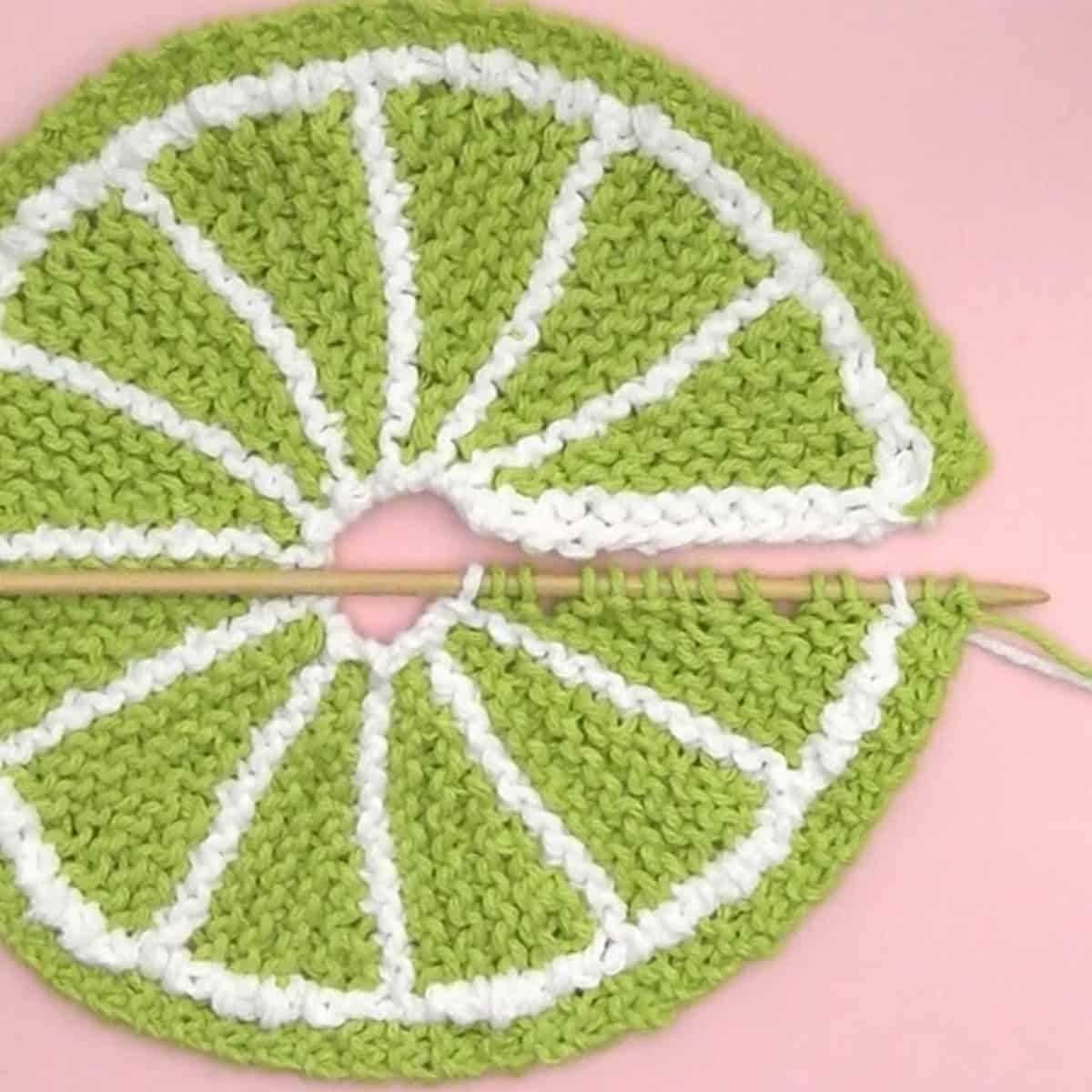
Colorwork techniques can add a beautiful and eye-catching element to your knitted dishcloths. Whether you’re a beginner or an experienced knitter, incorporating colorwork into your dishcloth patterns is a great way to enhance their visual appeal. There are several different colorwork techniques that you can use to create unique and intricate designs.
Fair Isle: Fair Isle is a traditional colorwork technique that involves knitting with two different colors in a row. The colors are carried across the back of the work, creating a stranded design. Fair Isle is known for its intricate and geometric patterns, making it a popular choice for those looking to add complexity to their dishcloths.
Intarsia: Intarsia is a colorwork technique that involves knitting blocks of color separately, rather than carrying the colors across the back of the work. This allows you to create larger and more detailed designs. Intarsia can be a bit more challenging than Fair Isle, as you need to manage multiple strands of yarn, but the results can be stunning.
Slip Stitch: Slip stitch colorwork involves slipping stitches from the previous row rather than knitting with multiple colors in one row. This technique creates a mosaic-like effect, with the slipped stitches creating the color pattern. Slip stitch colorwork is a great option for beginners or those looking for a simpler colorwork technique.
Stripes: One of the simplest colorwork techniques is stripes. You can easily add stripes to your dishcloths by alternating between two or more colors at regular intervals. This technique is great for beginners who are new to colorwork and want to start with something easy but still visually appealing.
When incorporating colorwork into your dishcloth patterns, it’s important to choose yarns that are suitable for colorwork and provide good contrast. The color combinations you choose can greatly impact the final look of your dishcloths, so don’t be afraid to experiment and try out different color combinations.
Overall, colorwork techniques can elevate the visual appeal of your knitted dishcloths and allow you to create unique and personalized designs. Whether you opt for the complexity of Fair Isle or the simplicity of stripes, adding colorwork to your dishcloth patterns is a great way to showcase your knitting skills and create beautiful and functional kitchen accessories.
Lace Knitting Patterns for Dishcloths
If you’re looking for a way to add some elegance and charm to your kitchen, lace knitting patterns for dishcloths are the perfect option. These delicate and intricate designs are not only beautiful, but they also provide great functionality. Lace knitting creates a lightweight and absorbent fabric that is perfect for cleaning dishes and countertops.
One of the most popular lace knitting patterns for dishcloths is the “Feather and Fan” stitch. This pattern creates a stunning wave-like design that adds a touch of sophistication to any kitchen. The openwork pattern allows the dishcloth to dry quickly and provides a gentle scrubbing texture to tackle even the toughest spills and stains.
To create a “Feather and Fan” dishcloth, you will need a set of knitting needles and a ball of cotton yarn. Start by casting on the desired number of stitches, usually around 40 to 60, depending on your preference for size. Then, follow the lace pattern, which typically consists of repeating sets of knit and purl stitches to create the iconic waves. Finish off the dishcloth with a simple bind-off and weave in any loose ends.
Another popular lace knitting pattern for dishcloths is the “Diamond Lace” stitch. This pattern creates a beautiful diamond-shaped design that adds an eye-catching element to your kitchen decor. The lacy holes in the pattern allow the dishcloth to dry quickly, while the textured areas provide excellent cleaning power.
To create a “Diamond Lace” dishcloth, you will need a set of knitting needles and a ball of cotton or linen yarn. Begin by casting on the desired number of stitches, usually around 40 to 60. Then, follow the lace pattern, which typically involves a combination of knit, purl, yarn over, and decrease stitches to create the diamond shape. Finish off the dishcloth with a simple bind-off and weave in any loose ends.
Whether you choose the “Feather and Fan” or “Diamond Lace” pattern, lace knitting for dishcloths is a great way to add elegance and functionality to your kitchen. These patterns are relatively easy to learn and provide an enjoyable knitting experience for both beginners and experienced knitters. So grab your knitting needles, choose your favorite lace pattern, and start creating beautiful and practical dishcloths today!
Advanced Dishcloth Patterns for Experienced Knitters
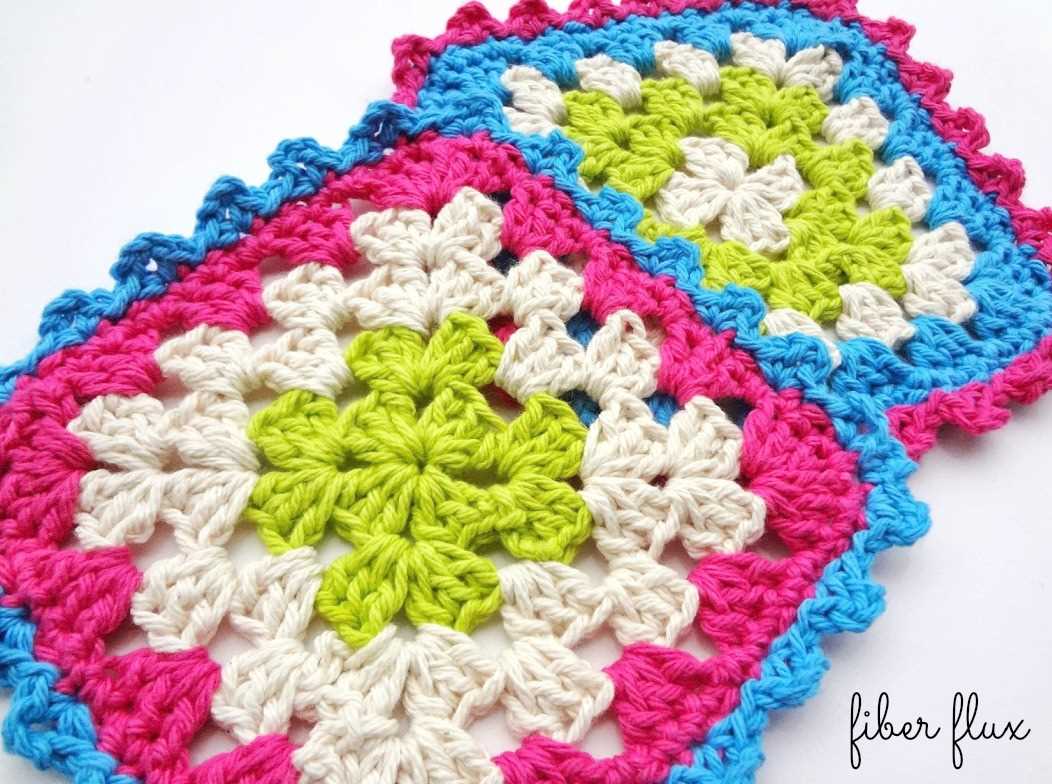
If you’re an experienced knitter looking to challenge yourself with more intricate and advanced dishcloth patterns, you’ll find plenty of options to explore. These patterns require a solid understanding of knitting techniques and stitches, as well as the ability to follow complex instructions.
One advanced dishcloth pattern that is sure to impress is the Cable dishcloth. This pattern incorporates beautiful cables that twist and intertwine, creating a textured and visually appealing design. The cables may require the use of a cable needle and the ability to read and interpret cable charts. The end result is a stunning dishcloth that is as functional as it is decorative.
Pattern:
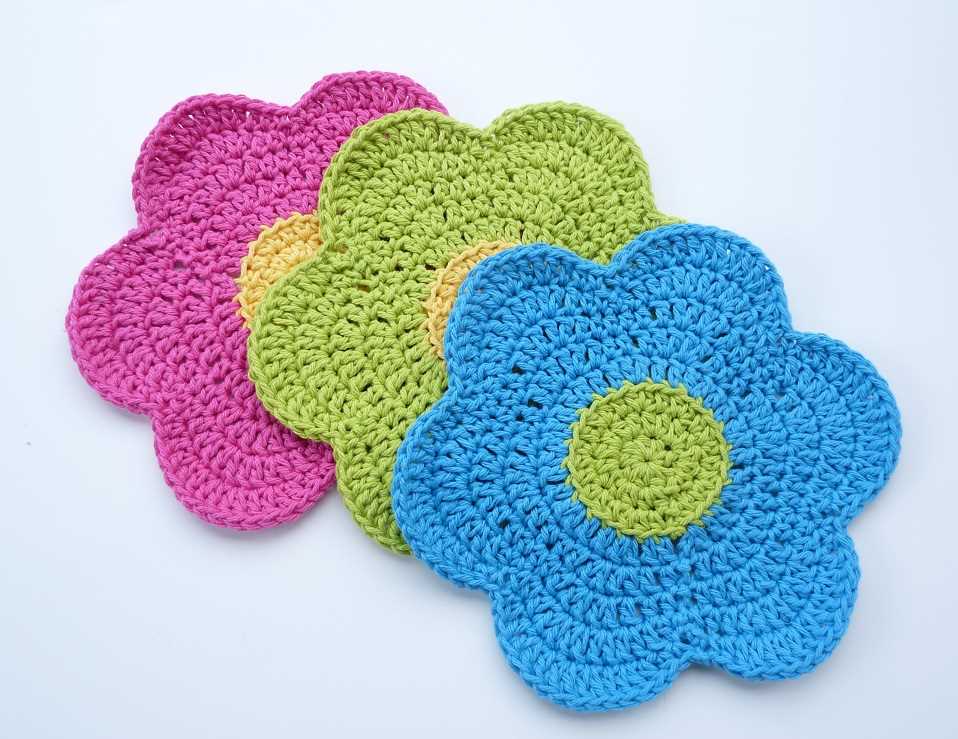
- Cast on 40 stitches.
- Row 1: Knit.
- Row 2: Purl.
- Row 3: K2, p6, k4, p6, k4, p6, k2.
- Row 4: P2, k6, p4, k6, p4, k6, p2.
- Continue repeating rows 3 and 4 until piece measures desired length.
- Knit one row.
- Purl one row.
- Bind off all stitches.
Another advanced dishcloth pattern to consider is the Lace dishcloth. Lace patterns often involve intricate and delicate stitchwork, creating an elegant and lightweight finished product. These patterns typically require the use of finer yarn and smaller needles to achieve the desired effect. Knitters should be comfortable working with yarn overs, decreases, and other lace-specific techniques.
Pattern:
- Cast on 50 stitches.
- Row 1: Knit.
- Row 2: Purl.
- Row 3: Knit.
- Row 4: Knit 3, *yo, k2tog, repeat from * until 3 stitches remain, knit 3.
- Repeat rows 1-4 until piece measures desired length.
- Knit one row.
- Purl one row.
- Bind off all stitches.
By attempting these advanced dishcloth patterns, experienced knitters can push their skills to new levels and create truly unique and impressive pieces. Whether you choose to challenge yourself with cables, lace, or other complex stitch patterns, the end result will be a dishcloth that showcases your knitting prowess and enhances your kitchen decor.
Tips for Caring for and Washing Knitted Dishcloths
Knitted dishcloths are a great addition to any kitchen. They are easy to use, versatile, and can be both functional and decorative. To prolong the life of your knitted dishcloths and keep them looking and feeling their best, it’s important to take proper care of them. Here are some tips for caring for and washing your knitted dishcloths:
- Wash them before first use: It’s a good idea to wash your knitted dishcloths before using them for the first time. This will help remove any excess dye or chemicals that may be present from the manufacturing process.
- Hand wash or gentle machine wash: Knitted dishcloths are delicate and should be treated with care. It’s best to hand wash them in warm water with a mild detergent. If you prefer to use a washing machine, make sure to use the gentle cycle and place the dishcloths in a mesh laundry bag to protect them.
- Avoid hot water and harsh chemicals: Hot water can cause shrinkage and damage to the fibers of knitted dishcloths. Also, avoid using harsh chemicals or bleach, as they can weaken the fibers and cause them to break down over time.
- Dry flat: After washing, gently squeeze out any excess water from the dishcloths and then lay them flat to dry. Avoid hanging them, as this can cause them to stretch or lose their shape.
- Rotate use: To ensure that your knitted dishcloths wear evenly, it’s a good idea to rotate their use. This means using a different dishcloth each time you wash dishes or clean surfaces.
By following these tips, you can keep your knitted dishcloths looking and feeling their best for years to come. Whether you use them for washing dishes, cleaning countertops, or as hot pads, knitted dishcloths are a practical and eco-friendly choice for your kitchen.